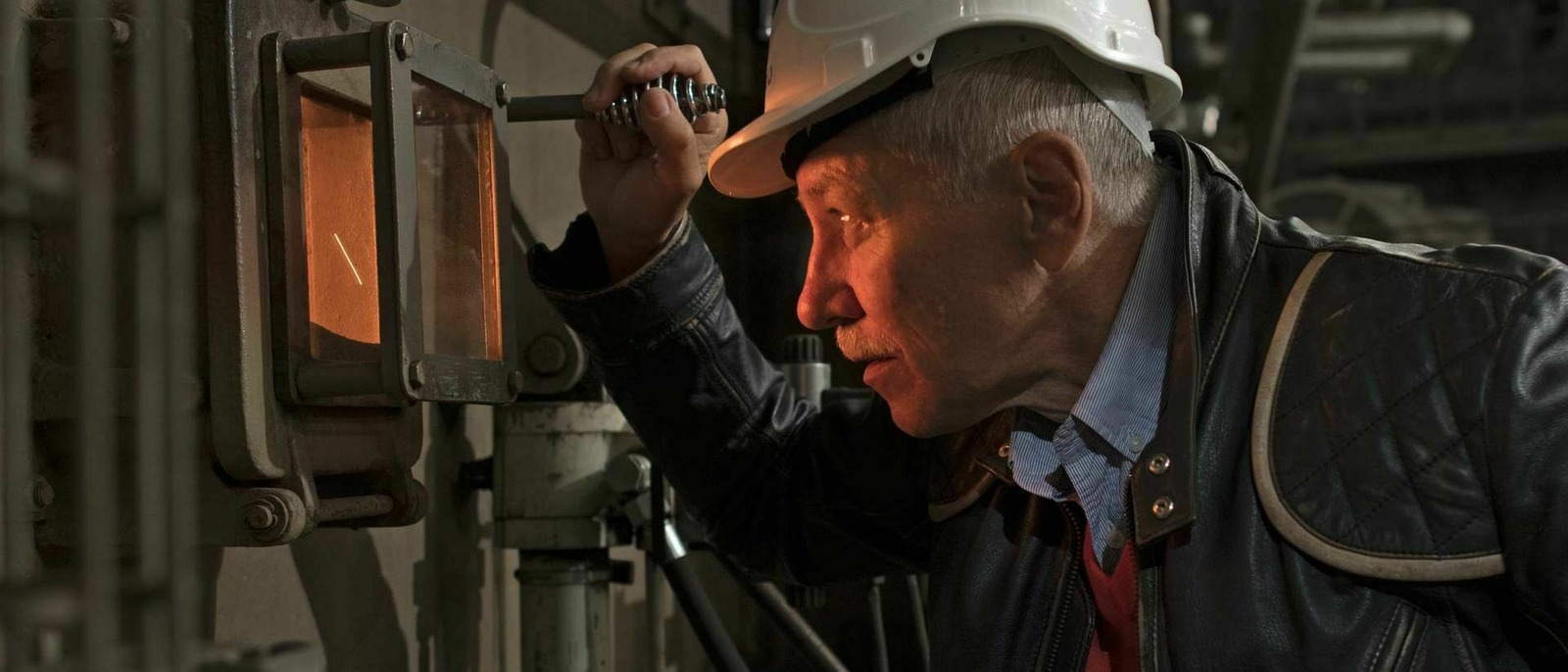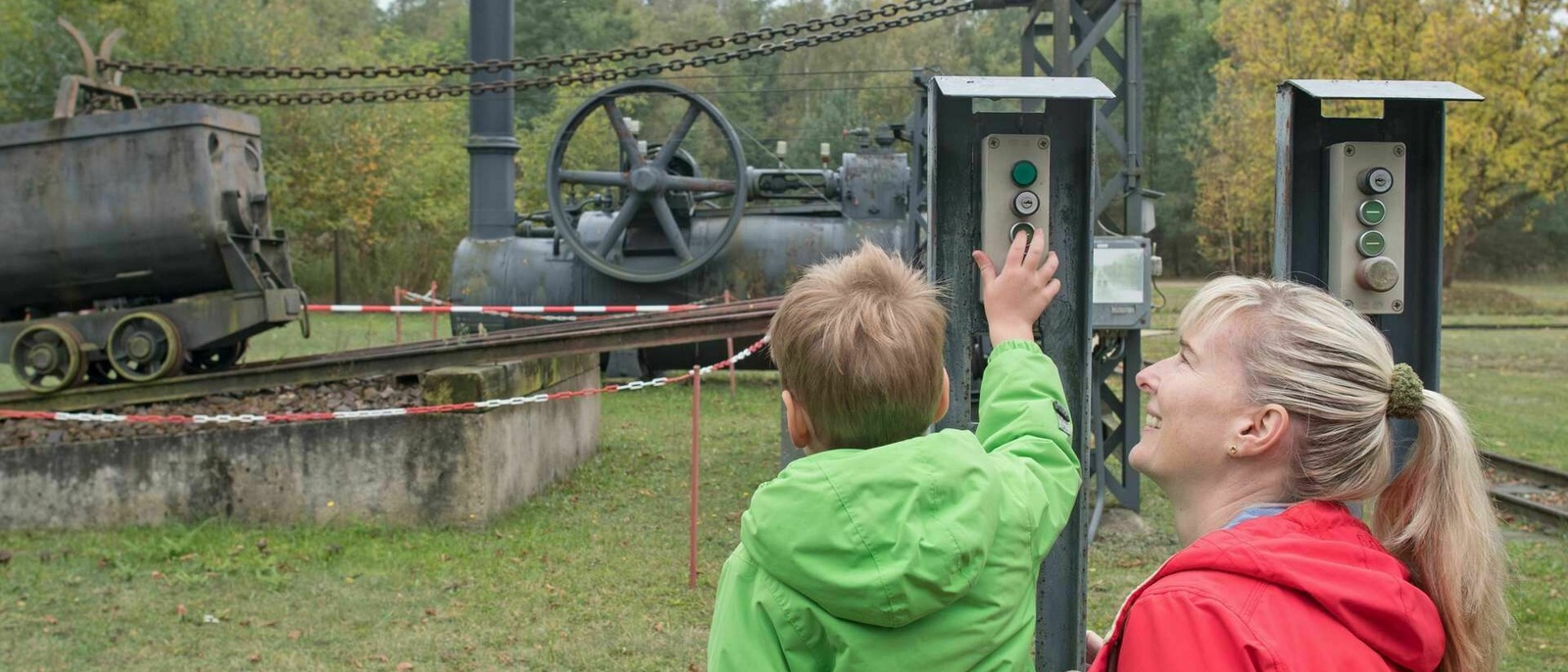Lusatian Industrial Heritage ENERGY Route
Head for the factory on your day off: old opencast mining machines are transformed into piers, while the tall stairwells of former briquette factories provide far-reaching views
There are things here to make even the tallest feel tiny. For example, a colossal overburden conveyor bridge, resembling a horizontal Eiffel Tower, from which the adventurous can abseil. Or former power stations that have been converted into museums, or the towers of old briquette factories and coking plants that now offer far-reaching views across the Lusatian Lakeland. While these buildings and machines may no longer fulfil their original functions, they keep alive the memory of an industry that will soon be completely gone.
These fascinating reminders of the past can be explored on the Lusatian Industrial Heritage ENERGY Route. Each of them tells the story of human endeavours in power generation in the region, while also explaining the transformation from opencast mining to Lusatian Lakeland.










Setting course for new shores
Nowhere is this process more evident than in the town of Grossräschen, which gives its name to the nearby lake. Looking across the shimmering water, it is hard to believe that just 20 years ago the area looked like a scene from the apocalypse. At the end of the last road and houses, the town gave way to the dusty desert of an opencast mine, from which 342 million tonnes of lignite were extracted. Today, the waters of Lake Grossräschen cover the cavernous hole like a healing plaster.
The IBA SEE International Building Exhibition, which took place from 2000 to 2010, provided new ideas for Grossräschen. The IBA Terraces visitors centre and a pier made from the last large-scale mining equipment used here were built on the shores of the lake during this period. The pier provides the symbolic link between the old and the new landscapes. The IBA Terraces visitor centre is the ideal starting point for tours through this reinvented region.
The world’s largest machine
Anyone who fancies a bird’s-eye view should head to Lichterfeld in Brandenburg’s south, where a mighty giant called F60 rests. The F stands for Förderbrücke, or overburden conveyor bridge, and this is the biggest movable machine in the world. The sight of this ‘horizontal Eiffel Tower’ will leave you speechless. The structure weighs 11,000 tonnes and was used to carry away rock and sand excavated from above the coal seams. Today, there are people in bright helmets climbing around this 500 metre long steel colossus, known as the F60 visitor mine. Adventurous types also have the opportunity to abseil down the giant structure.
From the highest heights to deep down below
And that’s not the only way to get the adrenaline pumping. How about a spectacular ride in an off-road vehicle into the depths of an active opencast mine? A tour of the Welzow-Süd opencast mine provides plenty of opportunities to get up close to one of these gigantic machines. The machinery at Europe’s largest briquette factory in Domsdorf is rarely in action these days, but visitors to the Louise briquette factory can still experience industrial heritage at close hand. The factory is now a museum, powered by the energy of its former employees. At least once a year, the old briquette presses are turned on for the Steam Days event, when the old ‘Louise’, built in 1882, comes huffing and puffing back to life.
The smell of lignite lingers in the Knappenrode Energy Factory in Saxony due to the coal dust that still sticks to the historic factory halls. The former briquette factory, constructed entirely from red brick, towers above the pine forest. Today, the building is a seven-storey high museum that tells the story of opencast lignite mining and the people who worked there. From the top of the stair tower there are magnificent views over the changing landscape of the Lusatian Lakeland. And because the Energy Factory is such a unique reminder of coal processing in Upper Lusatia, the permanent exhibition inside will be even larger from next year onwards. There’s plenty to discover outside too, including two huge bucket-wheel excavators that once dug their way through the coal seams. Or how about a ride on a pump trolley? This is, quite literally, industrial heritage at your fingertips. Explore the extensive area around the Energy Factory on the former mine railway using muscle power only.
Stops along the ENERGY Route
The range of tourist facilities offered at these industrial heritage sites varies widely. To provide a rough orientation, the sights have been categorised as follows:
Highlights – Tourist attractions offering a full range of services and facilities
Recommendations – Exciting sights that offer a slightly more limited range of services
Insider tips – Hidden gems; guided tours, some by arrangement only
- Highlights: F60 visitor mine, IBA Terraces visitor centre, Knappenrode Energy Factory, Brandenburg State Museum of Modern Art at Dieselkraftwerk Cottbus
- Recommendations: Welzow-Süd opencast mine, Schwarze Pumpe power station, Kraftwerk Plessa power station, Louise briquette factory
- Insider tips: Lauchhammer bio towers, Marga garden city, Margarethenhütte electroceramics museum
